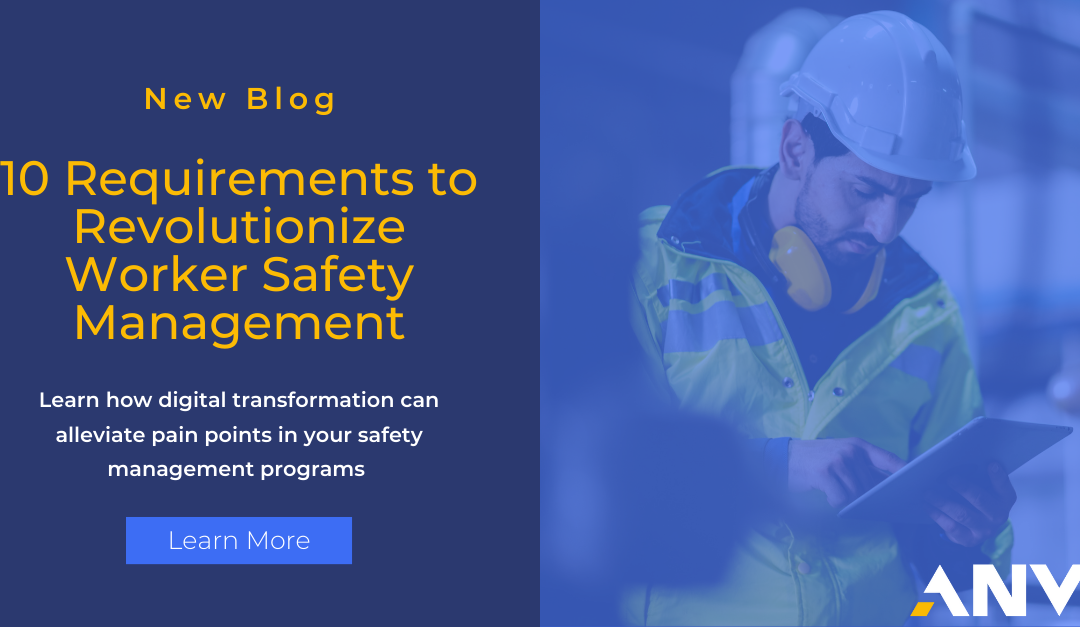In today’s fast-paced work environments, ensuring the safety of frontline workers is a top priority for organizations across various industries. However, traditional systems for managing worker safety often come with their fair share of challenges and limitations. From manual data entry to a lack of communication channels, these pain points can hinder the effectiveness of safety protocols. Enter digital platforms designed to address these issues and revolutionize the way organizations approach worker safety. Here we explain the 10 requirements to revolutionize worker safety management.
#1 Streamlining Data Entry:
One of the major pain points in the current system is the need for manual data entry, which can be time-consuming and prone to errors. Digital transformation can tackle this problem by providing an autofill feature, eliminating the need for workers to manually enter repetitive information. By automating this process, your company can save valuable time and ensure accuracy in data collection.
#2 Enhanced Note-Taking Capabilities:
In the current system, workers often face limitations when it comes to documenting important notes and extra information. A digital platform would offer an intuitive solution by enabling workers to click ‘yes’ and make relevant notes directly within the system. This feature not only enhances data accuracy but also improves the overall record-keeping process.
#3 Efficient Ticket Management:
Manually closing duplicate tickets and distinguishing between similar issues can be a tedious task. Digital platforms address this challenge by providing a streamlined ticket management system. By automatically identifying and consolidating duplicate issues, it ensures that workers can easily navigate through tickets and avoid unnecessary duplication, saving time and effort.
#4 Reminders and Task Tracking:
Keeping track of ongoing tasks and deadlines is crucial for maintaining worker safety. However, the lack of reminders in the current system often leads to missed deadlines and overlooked tasks. Digital transformation offers comprehensive reminder features that notify workers about pending tasks and upcoming deadlines, empowering them to stay on top of their responsibilities.
#5 Enhanced Collaboration and Accountability:
In the current system, it is challenging to track who is doing what, which can impede effective collaboration and accountability. A digital platform overcomes this hurdle by providing a centralized hub for communication, enabling workers to seamlessly communicate and coordinate their activities. This fosters a collaborative environment and ensures that everyone is aware of their roles and responsibilities.
#6 Mobile-Friendly Forms and Document Management:
Using Excel spreadsheets on mobile devices can be clunky and inconvenient, hindering productivity and ease of use. Digital transformation offers mobile-friendly forms that allow workers to conveniently fill out the information on their phones. Additionally, enabling linking PDFs and Excel sheet capabilities would provide a unified and efficient document management system.
#7 Multimedia Integration:
The ability to capture and share videos, photos, and signatures directly from the field is crucial for comprehensive safety documentation. Digital platforms allow workers to seamlessly integrate multimedia elements into their reports, enhancing the accuracy and visual representation of safety-related information.
#8 In-App Communication:
Efficient communication channels are vital for addressing safety concerns promptly. Digital transformation that includes an in-app communication feature that enables real-time communication between workers, supervisors, and safety managers facilitates quick response times and fosters a culture of open communication, leading to improved safety outcomes.
#9 Data Completion Verification:
Ensuring that workers have completed all necessary fields and requirements is a challenge in the current system. A digital platform would address this issue by providing visibility into the completion status of forms and reports. Supervisors and safety managers can easily track whether all required fields have been filled out, reducing errors and improving data completeness.
#10 Accountability and Analytics:
Client demands for accountability are increasing, and organizations need robust tools to track compliance and measure safety performance. Digital transformation would provide a comprehensive assessment of worker compliance.
How Anvl Can Help
Anvl’s Connected Worker Safety Platform addresses the pain points of the current systems and revolutionizes the way organizations approach worker safety. By streamlining data entry, enhancing note-taking capabilities, and providing efficient ticket management, Anvl saves valuable time and improves data accuracy.
The platform’s reminder and task tracking features ensure that workers stay on top of their responsibilities, while the collaborative environment and in-app communication capabilities promote efficient teamwork. Anvl’s mobile-friendly forms, multimedia integration, and document management system enable workers to capture and share vital information easily. With Anvl, organizations can hold frontline workers and supervisors accountable, track compliance, and measure safety performance through custom reports and the Power Score feature.
By integrating safety data sheets and providing clear workflows, Anvl enhances worker knowledge and prioritizes safety awareness. Overall, Anvl’s Connected Worker Safety Platform empowers organizations to create a culture of safety, improve productivity, and ensure the well-being of their frontline workers.
Anvl: Let’s Get to Work
Ready to see how Anvl can impact your organization? Contact one of our experts today.



